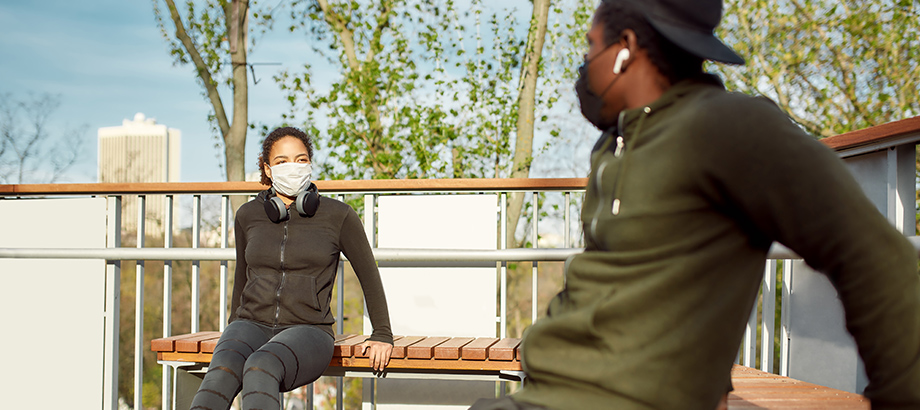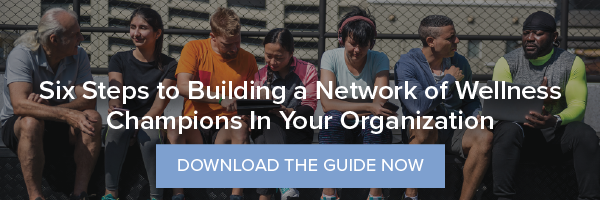
It’s understandable if you’re not feeling 100% like yourself in 2020. Neither are your employees. In times of upheaval, the “soft” skills we use at work—focus, patience, creativity, attention to detail—can all suffer.
How can we regain our sense of stability?
Due to the pandemic, we’re all feeling the effects of what’s known as VUCA: Volatility, Uncertainty, Complexity, and Ambiguity.
Based on the leadership theories of Warren Bennis and Burt Nanus and popularized by the U.S. Army War College during the 1980s, this acronym is well-suited to helping leaders understand how they and their employees are feeling these days, and why:
- Volatility – While not necessarily hard to understand, the current situation is uncertain and unstable, and of undetermined length.
- Uncertainty – While the situation’s cause and effect are known, there is still information that is not known.
- Complexity – The situation has many interconnected and interdependent parts and variables.
- Ambiguity – No precedents exist, there are many “unknown unknowns.”
The key to offsetting the damaging effects of VUCA? Establishing and maintaining healthy habits, which can create not only a sense of better well-being in employees, but a sense of normalcy and predictability–both of which are largely lacking right now.
What Leaders Can Do to Encourage Healthy Habit Formation
To give companies some hard data to act upon, Leadership Extension Consulting conducted a survey six weeks into the pandemic to examine how employees were faring in maintaining positive habits. The results, though concerning, were unsurprising:
- 62% were not maintaining a healthy diet
- 46% were not getting enough sleep
- 65% were not exercising regularly
- 64% were not managing stress
- 49% were not managing priorities or the work/life balance
Months further into our VUCA reality, those findings are unlikely to have improved. Based on these insights, Leadership Extension employed their change management expertise to give leaders actionable tips on how to help their employees form—and maintain—positive habits that can contribute to a healthier and more centered frame of mind.
Tip #1: Assess the Work from Home Environment
Repurposing the dining room table as a desk doesn’t necessarily make a conducive place to work. Leaders need to consider how they can help employees make their home office a productive, centering space.
Start by asking your employees questions, like: When you are working from home, where do you sit? Do you have a quiet space? Have we, as an organization, provided you with the right office equipment? You may discover there are features of the traditional office environment that employees need, like larger monitors or ready IT support.
Here are some actions leaders can take:
- Show Them How It’s Done: Not everyone is an office ergonomics expert, so resources on how to create a better work-from-home space would surely be welcome.
- Adjust the “Workday.” Review the traditional office hours to determine if flexibility can be offered to accommodate new demands, such as homeschooling, on employees’ time.
- Share Bright Ideas. Create a workplace challenge around the most creative, helpful, or ingenious work-from-home setups or hacks.
- Prevent Burnout. Employees are working from home, living at home, working different hours, doing non-work things during work hours…it makes it hard to maintain healthy delineation between work life and home life. A Breaks-Balance-Boundaries exercise can help employees set a reasonable number of tasks to be focused on in a day. As a leader, have a conversation with your employees so they know you don’t expect them to be working after a certain time of day, or on the weekend.
Tip #2: Make a Habit of Getting Personal
The thing about the “new normal” is that it isn’t. Just conducting work as usual fails to recognize the scope of what employees may be dealing with outside of work, and how that is impacting them on an emotional level:
- 68% of Americans say they know someone diagnosed with COVID-19.
- Nearly 93% of people in households with school-age children reported their children engaged in some form of “distance learning” from home; the Leadership Extension survey found that people who have children or other dependents at home due to the pandemic perceive significantly higher level of stress than those who do not.
- 53% of U.S. adults said that worry and stress related to coronavirus has had a negative impact on their mental health.
It’s time to get personal with employees, perhaps in a way you haven’t before. Listen with empathy and recognize that you might not fully understand what they are going through right now.
Here are some actions leaders can take:
- Reach Out Regularly. As the leader, it's up to you to create the habit of connecting with your employees on a consistent schedule.
- Not Strictly Business. Not every outreach needs to have a business purpose. A caring call to your employees, just to check in, will be appreciated.
- Start with You. Share lessons that you've learned about yourself during the pandemic so employees understand they can share their own problems and struggles with you.
- Make Time for Break Time. Some companies are doing virtual coffee chats or happy hours to pull employees together without the focus being about work. The camaraderie of coworkers is a crucial element of employee well-being.
Tip #3: Define Short-term Goals
Right now, the point at which the pandemic will be behind us is still unknown, so it’s important to focus your employees’ energy in the present. What does your team need to get done this week? Defining short-term goals and breaking long-term projects or objectives up into near-term tasks sets employees up for a win.
Here are some actions leaders can take:
- Make It Visual. Display goals in a virtual format using software that can display progress. With teams working remotely it’s important for them to feel connected and to be able see how you’re doing as a group.
- Take Things Off the Table. Some activities, like large-scale networking events, may need to be taken off the plan and out of the budget, or reimagined so you can accomplish those same outcomes in another way.
- All Habits Start with a Choice. Establishing or recommitting to positive habits begins with a choice in the moment. Making a plan helps employees stick to that decision over time.
Tip #4: Create a Wellness Culture
This situation has presented an opportunity for companies to revisit wellness. Leaders should be thinking about how to promote the wellness-focused programs and resources that are already available within the organization, or to consider creating one.
Especially now, employees need to know that, as an employer, you care about them. Efforts you make to help people in your organization care for themselves will come back tenfold because an employee that has been eating well, exercising, sleeping well, and managing their stress is an emotionally resilient employee that is engaged and productive.
Here are some actions leaders can take:
- Boost the EAP. Make sure employees know all the benefits available to them under your Employee Assistance Program (EAP), such as preventative health benefits, telehealth, gym memberships, mindfulness apps, etc. And don’t forget programs that address emotional health.
- Gamify Being Healthy. Set up a wellness challenge to help employees get their personal well-being back on track, like a step challenge. Or provide employees with a handwashing tracker and raffle off prizes to participants. Challenges create a sense of community, collaboration and fun. Here are some ideas perfect for fall.
- Make it Social. Encourage employees to share pictures of their COVID-19 prevention measures or safe quarantine activities via company intranet or social media.
- Put It on the Agenda. Schedule a set time during the workday to engage in a wellness activity, like a Walk and Talk outdoor meeting or a mid-afternoon meditation break.
- All Pull Together. Track metrics that are meaningful for your company or that show workforce progress as a whole. Let employees see how their individual efforts are impacting the company-wide efforts toward wellness to encourage themselves and each other.
Leading the Way to Healthy Habit Formation
Maintaining positive habits is an important goal anytime, but the stakes, and the pressures, are higher than ever during the pandemic. While some employees may be able to conquer bad habits by themselves, as a leader, it's also your job to see your employee as a whole person and, where they are struggling, help them get back on track.
The good news is that you can enlist help. A Wellness Champion Network is a team of people working toward the same goal: making your company a healthier place. As ambassadors for your employee wellness program they help plan and promote wellness challenges, biometric screening events, health coaching services, educational seminars, and any other wellness program initiatives or projects.
Get a six-step plan for recruiting and empowering a Wellness Champion Network at your organization in our complete “Guide to Building Your Wellness Champion Network.”




